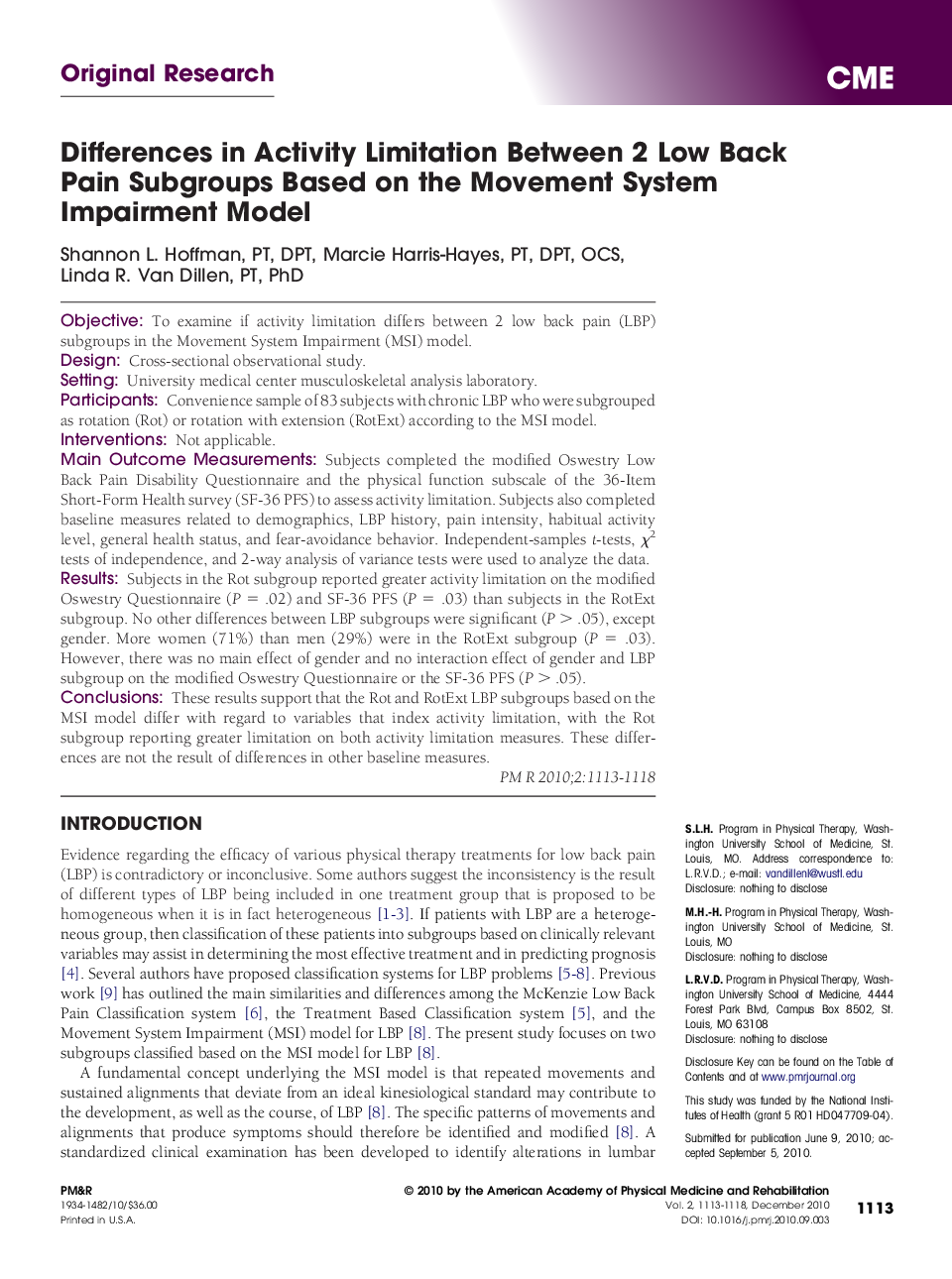| Article ID | Journal | Published Year | Pages | File Type |
|---|---|---|---|---|
| 2706196 | PM&R | 2010 | 6 Pages |
ObjectiveTo examine if activity limitation differs between 2 low back pain (LBP) subgroups in the Movement System Impairment (MSI) model.DesignCross-sectional observational study.SettingUniversity medical center musculoskeletal analysis laboratory.ParticipantsConvenience sample of 83 subjects with chronic LBP who were subgrouped as rotation (Rot) or rotation with extension (RotExt) according to the MSI model.InterventionsNot applicable.Main Outcome MeasurementsSubjects completed the modified Oswestry Low Back Pain Disability Questionnaire and the physical function subscale of the 36-Item Short-Form Health survey (SF-36 PFS) to assess activity limitation. Subjects also completed baseline measures related to demographics, LBP history, pain intensity, habitual activity level, general health status, and fear-avoidance behavior. Independent-samples t-tests, χ2 tests of independence, and 2-way analysis of variance tests were used to analyze the data.ResultsSubjects in the Rot subgroup reported greater activity limitation on the modified Oswestry Questionnaire (P = .02) and SF-36 PFS (P = .03) than subjects in the RotExt subgroup. No other differences between LBP subgroups were significant (P > .05), except gender. More women (71%) than men (29%) were in the RotExt subgroup (P = .03). However, there was no main effect of gender and no interaction effect of gender and LBP subgroup on the modified Oswestry Questionnaire or the SF-36 PFS (P > .05).ConclusionsThese results support that the Rot and RotExt LBP subgroups based on the MSI model differ with regard to variables that index activity limitation, with the Rot subgroup reporting greater limitation on both activity limitation measures. These differences are not the result of differences in other baseline measures.
